Matt Rees's Blog - Posts Tagged "reviews"
NY Times recommends "A Grave in Gaza"
In its listing of recommended books new to paperback, The New York Times features the second of my Palestinian crime novels A GRAVE IN GAZA, just out in softcover from Mariner/Houghton Mifflin Harcourt. (The UK paperback, titled THE SALADIN MURDERS, has been out in small format for a while already.) Here's what the Times writes:
"Omar Yussef, an aging Palestinian schoolteacher, is the hero of a series of mysteries by Rees, a former Jerusalem bureau chief for Time magazine. In this one, he encounters corruption and violence when he attempts to free a teacher from one of the United Nations schools who’s been jailed on spying charges. “Setting a mystery in the epicenter of a war zone challenges the genre conventions,” Marilyn Stasio wrote in the [New York Times:] Book Review about the series’s first book, THE COLLABORATOR OF BETHLEHEM, but “it clarifies the role of the detective as the voice of reason.”
Incidentally, 'The Collaborator of Bethlehem' is titled THE BETHLEHEM MURDERS in the UK.
"Omar Yussef, an aging Palestinian schoolteacher, is the hero of a series of mysteries by Rees, a former Jerusalem bureau chief for Time magazine. In this one, he encounters corruption and violence when he attempts to free a teacher from one of the United Nations schools who’s been jailed on spying charges. “Setting a mystery in the epicenter of a war zone challenges the genre conventions,” Marilyn Stasio wrote in the [New York Times:] Book Review about the series’s first book, THE COLLABORATOR OF BETHLEHEM, but “it clarifies the role of the detective as the voice of reason.”
Incidentally, 'The Collaborator of Bethlehem' is titled THE BETHLEHEM MURDERS in the UK.
The Guardian: 5 Foreign Sleuths to Read
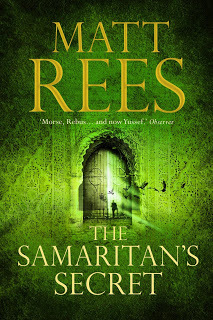
The Guardian recently ran an interesting article seeking to explain the popularity of crime novels set in "exotic" locations -- either written by locals or by foreigners living there. The article makes a few worthwhile points about the basics of this new-ish sub-genre. It also includes a list of the top five such "foreign" sleuths recommended by the newspaper:
Inspector Chen -- from the novels of Qiu Xialong
Dr Siri -- Colin Cotterill
Precious Ramotswe -- Alexander McCall Smith
Yashim Togalu -- Jason Goodwin
and, of course,
my own Omar Yussef, the Bethlehem schoolteacher who's forced into detective work by the lawlessness of Palestine.
Review: the mystery of the new Mankell
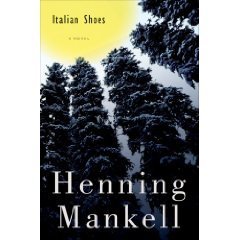
Italian Shoes by Henning Mankell
US: New Press. April 1, 2009. Isbn: 1595584366
In his 26th novel, Sweden’s top crime writer has eschewed the genre that has seen him sell 30 million books. Even so, fans of his Inspector Wallander novels will find much of what they love about the Skåne detective in the narrator of “Italian Shoes”—only given even more depth by the constant focus on a man struggling with guilt and emotional silence.
Fredrik is a surgeon who abandoned his career a decade ago because of a mistake he made during an operation. He refused to acknowledge his error and went to live alone on a remote island. One morning he sees a woman standing on the frozen sea. He discovers that she’s the girlfriend he abandoned as a young man.
Harriet’s arrival forces Fredrik to meet a series of people from his past. He thought he could cut himself off on his island. As he realizes he can’t, he finds the allure of companionship attractive, but struggles to manage these new relationships.
This is a devastatingly honest and keenly personal novel. It ranks with Norwegian Per Petterson’s “Out Stealing Horses” for its marvelous portrayal of withdrawal from society—and its consequences. Mankell writes with a measured pace that’s in tune with the frozen weather and the slow body of the aging Fredrik.
Though “Italian Shoes” is a departure for Mankell, he examines a topic common to crime novels—death. But he reverses the crime novel’s way of looking at death. He’s not concerned here with how death occurs. Rather he wants to understand why anyone should care whether they live or die.
Crime writers create a violent death, to show how the remaining characters experience life in extreme circumstances. Here Mankell depicts a man who essentially stopped living and who rediscovers life when faced with the impending death of Harriet.
“Before I die,” Fredrik says, “I must know why I’ve lived.” In his dour, bitter way, Mankell has the answer.
Review: Red Hot Hurwitz
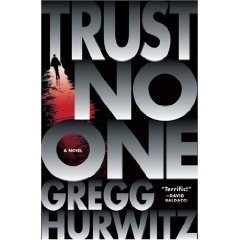
Trust No One by Gregg Hurwitz
St. Martin’s Press. To be published 23 June
The key to a first-rate thriller is for the main character to come up against a dead end many times during the book. The reader, knowing the forces arrayed against our hero and desperate to save him from more danger, each time wills him to use this excuse to abandon his quest. Of course, readers wouldn’t care at these turning points if the hero wasn’t a well-formed character whose humanity has drawn us to him, and that’s the other important element in the genre. Naturally the hero doesn’t quit, and our author takes us into the last segment of the book where the plot unravels and the twists snap us upright in our chairs.
Gregg Hurwitz fulfills all these criteria with real style in “Trust No One,” his new novel. It’d be worth reading if only for the startling denouement in which the hero battles against powerful forces – the Secret Service among others. But the drive of the book comes from the scars of his destroyed family. By the end of the book Hurwitz has tied a message of redemption into the fast-paced action.
"Trust No One" begins with Nick Horrigan catapulted out of the quiet life he’s lived for years. His stepfather, a Secret Service agent, was killed when Nick was a teen. Nick blames himself. As part of a cover-up, he was forced by other agents to go on the run. He’s been lonely and guilt-ridden for a decade. Now the Secret Service arrives through his window… and he’s not lonely any more.
A man threatening to blow up a California nuclear facility hands a key to Horrigan before he dies. As Horrigan tries to figure out what the key is for and why the man gave it to him, he’s drawn into a mystery that leads right back to his stepfather’s killing and into the upper echelons of the US political system.
Readers might detect an element of the “family at risk” sub-genre that Harlan Coben has perfected. Hurwitz does it with all the skill of Coben, but with a twist. In his rendition, the family isn’t only in need of rescue — it’s the reason for all the risk in the first place.
“Trust No One” is Hurwitz’s ninth novel, coming two years after the excellent “The Crime Writer”. He also writes for Marvel comics and is a screenwriter. Once you’ve read all his novels and comics, you might be intrigued to try “A Tempest, A Birth and Death: Freud, Jung, and Shakespeare’s Pericles,” which he published in the Summer 2002 edition of “Sexuality and Culture” (Rutgers University). If that sounds like a departure for a writer of thrillers, remember that "Pericles" is the story of the Prince of Tyre, who's on the run from assassins in ancient Phoenicia...
Review: The thriller that reminds us why Euro politics matter
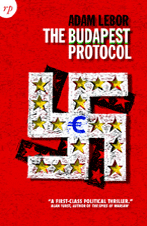
The Budapest Protocol, by Adam Lebor
(Reportage Press)
Sometimes a journalist comes across something so powerful that it seems bigger than the project he’s researching. Usually it’s put aside to serve as the basis for a future project, a magazine article or another nonfiction book.
Sometimes it takes such a grip on the writer’s imagination that there’s only one way to go. The novel. I know, because it’s how I turned from Middle East correspondent to the author of Palestinian crime fiction. Journalism seemed so limited by comparison, so unlikely to grab people and tell them “Pay attention, this really matters” the way a novel can.
That’s what happened to Adam Lebor in 1996 when he was researching his acclaimed “Hitler’s Secret Bankers: How Switzerland Profited from Nazi Genocide.” He stumbled upon a World War II intelligence dossier addressed to the US Secretary of State. It detailed a French agent’s report on German contingency plans for the economic takeover of Europe, should the Third Reich fail.
Lebor asked himself the question: what if the industrialists who intended to found this Fourth “economic” Reich had tried to do so, after the war? What if they had succeeded? (“What if,” as Stephen King notes in his “On Writing,” is the best place from which to start a thriller.)
From his vantage point as a correspondent based in Budapest, Lebor was able to see the massive inroads amounting more or less to takeover of post-Soviet economies by German and Austrian conglomerates. Add to that the growing centralization of the European Union and the introduction of its single currency forcing the economies of most of Europe to toe a single line, and you start to see why the Red House Report gripped him so.
The result is the chillingly real thriller “The Budapest Protocol,” published in the UK this month.
Alex Farkas, a local journalist, uncovers the economic conspiracy, which – as the novel unfolds – is focused on the election campaign of one of the conspirators as President of Europe (a post that many Brussels types would gladly see become reality). Farkas discovers plans for a new Holocaust against the Gypsies, which with the rise in these poor economic days of a neo-Nazi right-wing in Hungary is another of the novel’s moments of eerie realism.
What really drives Farkas, though, is the sinister murder of his grandfather, a survivor of the Budapest ghetto and a former dissident. That gives the novel the personal underpinning that elevates it above pure conspiracy theory. In fact, it makes it a first-rate thriller comparable to Robert Harris’s “Fatherland.” The novel reminds us that the politics of Europe remains more charged than the dull image the Brussels technocrats have lulled us into.
I’ll bet you’re sorry now you didn’t vote three weeks ago in the Euro elections. You will be after you read this novel.
Published on June 21, 2009 05:21
•
Tags:
budapest, crime, department, eastern, europe, fiction, futuristic, germany, hungary, jews, journalism, nonfiction, reviews, state, thrillers
My 5 favorite novels
My second Palestinian crime novel A Grave in Gaza (UK title: The Saladin Murders) is just now published in Holland. The Dutch newspaper de Volkskrant asked me to contribute a list of my five favorite books, or at least those which've had the biggest impact on me as a writer. Here's what I wrote:
Let It Come Down – Paul Bowles
Writers look for resonance. You might say Bowles has us with his title alone, which resonates with doom even before he writes his first sentence. (It’s drawn from “MacBeth.” When the murderers come upon Banquo, he says that it looks like there’ll be rain. The murderer lifts his knife and says: “Let it come down.” Then he kills him.) But with this novel about Morocco, as in his more famous Algerian novel “The Sheltering Sky”, Bowles was even more resonant. When writing, he would often travel through North Africa. Each day, he would incorporate something into his writing that had actually happened during the previous day’s journey. Working in the Middle East, I often follow that technique, adding details from yesterday’s stroll through the Muslim Quarter of Jerusalem or a refugee camp in Bethlehem.
The Long Goodbye – Raymond Chandler
This is the novel that Chandler labored over longest and thought his best. He was right. It exposes a deep emotional side to his great detective creation Philip Marlowe. Chandler was the greatest stylist of Twentieth Century American fiction. Try this image, when a beautiful woman has just walked into a bar full of men and everyone falls silent to look at her: “It was like just after the conductor taps on his music stand and raises his arms and holds them poised.” Chandler inspires me to make every image in my book as good as that.
The King Must Die – Mary Renault
I was heading for Jordan to cover the dieing days of King Hussein a decade ago. I happened to pick up a used copy of this book -- the title seemed appropriate. But as I waited in a rainy Amman winter for the poor old monarch to die, I discovered that Renault had a capacity to describe the classical world as though she had lived through that era. Her novels are the best portrayal of homosexual love and of the great values of Greece in literature anywhere.
The Cold Six Thousand – James Ellroy
I love to see real characters from Hollywood and Washington turn up in Ellroy’s terse, hip, hardboiled poetic fiction. This story of CIA/FBI renegades in the aftermath of the Kennedy assassination is perfect. I saw Ellroy read years ago in New York and he blew me away. If you can find a better opening paragraph to a chapter than this one, let me know: “Heat. Bugs. Bullshit.” Dig it.
The Power and the Glory – Graham Greene
Greene went to Mexico to research a travel book, but he showed that journalistic research can turn into literature of great spirituality with this story of a drunken priest on the run. I try to remember that as I flick through my old reporter's notebooks for new ideas for my novels. Greene's is such a powerful examination of the loss of belief that it captivates even a non-Catholic, non-believer like me. The scene where the priest steals a hunk of meat from a stray dog is astonishing. The priest starts to beat the dog: “She just had to endure, her eyes yellow and scared and malevolent shining back at him between the blows.” Like Mexico under dictatorship. Like the priest before a disapproving God.
Let It Come Down – Paul Bowles
Writers look for resonance. You might say Bowles has us with his title alone, which resonates with doom even before he writes his first sentence. (It’s drawn from “MacBeth.” When the murderers come upon Banquo, he says that it looks like there’ll be rain. The murderer lifts his knife and says: “Let it come down.” Then he kills him.) But with this novel about Morocco, as in his more famous Algerian novel “The Sheltering Sky”, Bowles was even more resonant. When writing, he would often travel through North Africa. Each day, he would incorporate something into his writing that had actually happened during the previous day’s journey. Working in the Middle East, I often follow that technique, adding details from yesterday’s stroll through the Muslim Quarter of Jerusalem or a refugee camp in Bethlehem.
The Long Goodbye – Raymond Chandler
This is the novel that Chandler labored over longest and thought his best. He was right. It exposes a deep emotional side to his great detective creation Philip Marlowe. Chandler was the greatest stylist of Twentieth Century American fiction. Try this image, when a beautiful woman has just walked into a bar full of men and everyone falls silent to look at her: “It was like just after the conductor taps on his music stand and raises his arms and holds them poised.” Chandler inspires me to make every image in my book as good as that.
The King Must Die – Mary Renault
I was heading for Jordan to cover the dieing days of King Hussein a decade ago. I happened to pick up a used copy of this book -- the title seemed appropriate. But as I waited in a rainy Amman winter for the poor old monarch to die, I discovered that Renault had a capacity to describe the classical world as though she had lived through that era. Her novels are the best portrayal of homosexual love and of the great values of Greece in literature anywhere.
The Cold Six Thousand – James Ellroy
I love to see real characters from Hollywood and Washington turn up in Ellroy’s terse, hip, hardboiled poetic fiction. This story of CIA/FBI renegades in the aftermath of the Kennedy assassination is perfect. I saw Ellroy read years ago in New York and he blew me away. If you can find a better opening paragraph to a chapter than this one, let me know: “Heat. Bugs. Bullshit.” Dig it.
The Power and the Glory – Graham Greene
Greene went to Mexico to research a travel book, but he showed that journalistic research can turn into literature of great spirituality with this story of a drunken priest on the run. I try to remember that as I flick through my old reporter's notebooks for new ideas for my novels. Greene's is such a powerful examination of the loss of belief that it captivates even a non-Catholic, non-believer like me. The scene where the priest steals a hunk of meat from a stray dog is astonishing. The priest starts to beat the dog: “She just had to endure, her eyes yellow and scared and malevolent shining back at him between the blows.” Like Mexico under dictatorship. Like the priest before a disapproving God.
When poets do the talking
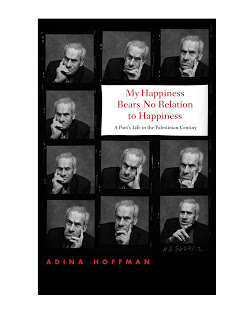
A new book examines the lives of Palestinian poets
By Matt Beynon Rees - on GlobalPost
JERUSALEM — Whenever Palestinian and Israeli artists get together for public “dialogues,” it always seems to end with the Israelis saying, “We’re sorry,” and the Palestinians responding, “Screw you anyway.”
That was how it went at a literary conference in the Jerusalem monastery at Tantur where I moderated a couple such discussions two years ago.
Except for the opening session.
The day began with a reading by Taha Muhammad Ali, a poet who lives in Nazareth, and his translator Peter Cole, a native of New Jersey and now a Jerusalem resident. Taha, who was then 75 years old, recited several of his poems, which Cole read in English.
Taha was avuncular and bumbling, endearing him to the audience of international publishers. But his poetry was deceptively incisive and personal, transcending the sense of victimization that would color the panel discussions for the rest of the day. Somehow he seemed to be the only one that day who had anything real to say.
"Don’t aim your rifles / at my happiness, / which isn’t worth / the price of a bullet,” Taha read. “My happiness bears / no relation to happiness.”
The warmth and intelligence of Taha’s readings drove Adina Hoffman, a Jerusalem-based writer and wife of translator Cole, to plan a biography of the poet (“My Happiness Bears No Relation to Happiness: A Poet’s Life in the Palestinian Century,” Yale University Press). Only then did she discover that, despite all the ink spilled on the Palestinian issue over the years, no one had ever written a biography of any Palestinian poet.
So she expanded the book. Using Taha as the central figure, she constructed the intersecting life stories of writers as diverse as Mahmoud Darwish, the "national" poet whose death last year prompted weepy editorials around the world, and Rashid Hussein, the most original and tortured of them, who died alone and drunk in New York 30 years ago.
Hoffman’s book is a way for readers to get around the usual stereotypes of the Palestinians as they’re portrayed in the cliches of their political struggle. She looks at the fascinating day-to-day, emotional history of this troubled people as told through their dynamic poetic culture.
“One can get a different idea of Palestinians as people through the history of their poets,” Hoffman told GlobalPost. “Poetry and poets occupy such an essential role in Palestinian society: Throughout much of the last century, poetry has served as one of the most important means of political and social expression for the Palestinian people — and the poets who’ve given voice to that impulse are central to the culture.”
Their poetry forms a gap in our knowledge of the Palestinians because of the way reporters cover their story — focusing on the violence and pyrotechnics and screaming, rather than on what people actually feel beneath it all.
“So much of the news coverage of the Palestinian story winds up treating them as a faceless group — whether a group of terrorists or a group of downtrodden victims,” Hoffman said. “I wanted to offer a view of Palestinian life that depicted as precisely and deeply as possible the full human range of feeling and complexity that exist in that culture.”
Hoffman uses Taha’s story as the framework for an alternative telling of Palestinian history, eschewing the slogans of political leaders and focusing on the soul-searching of young poets and writers.
You might think that would draw you away from reality into the realms of fantasy. But, as I’ve discovered in writing a series of Palestinian crime novels based on real stories I’ve reported, it’s only when a writer examines the underlying emotions of his subject that he uncovers the truth.
“The truest poetry is the most feigning,” Shakespeare wrote. Journalists, from whom we’re accustomed to getting our information about the Palestinians, aren’t supposed to be “feigning” at all. The result: no poetry and, often, no truth.
Hoffman’s telling of Taha’s story is particularly important because his life encompasses almost every element of the Palestinian experience. Born in 1931 in the village of Saffuriya, his family was expelled during the 1948 war which founded Israel. They fled to Lebanon, snuck back to Nazareth, and became refugees within Israel. He saw the devastation of war, too, on a visit to Lebanon in search of his childhood sweetheart.
Taha supported his family by running a souvenir shop for tourists visiting the town where Jesus grew up. He slowly developed a literary style that was at odds with traditional, highly formulaic Arab verse. Neither did he follow the incantatory public style of Darwish and the best known Palestinian poets.
Hoffman observes that Taha’s largely free verse (which many Palestinians rejected as simple prose chopped up into lines) is based around a classical Arabic concept of “a difficult, elusive, or even inscrutable simplicity.”
That simplicity is embodied in the poet’s peasant background, which Hoffman tells in vivid detail. Much of the book’s early chapters are devoted to life in Saffuriya, before the village was replaced with an Israeli community.
But it isn’t yet another regurgitating of Palestinian suffering. Her portrait of the village illustrates the richness of life there, showing how the memory of Saffuriya was part of “the world that surrounded these poets and that inspired them to write,” as she said.
It’s the remembrance of that world that dominates Taha’s poetry even six decades after Saffuriya ceased to exist. Hoffman’s account preserves the memory by recounting it and by introducing readers to the poetry that grew out of it.
Poets central to Palestinian culture
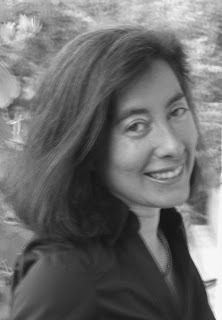
My favorite Palestinian poet is Taha Muhammad Ali, a quietly bumbling presence when he reads his poems, but a deceptively intelligent writer. The warmth and intelligence of Taha’s readings drove Adina Hoffman, a Jerusalem-based writer, to plan a biography of the poet (“My Happiness Bears No Relation to Happiness: A Poet’s Life in the Palestinian Century”, published this April by Yale University Press). Only then did she discover that, despite all the ink spilled on the Palestinian issue over the years, no one had ever written a biography of any Palestinian poet.
So she expanded the book. Using Taha as the central figure, she constructed the intersecting life stories of writers as diverse as Mahmoud Darwish, the "national" poet whose death last year prompted weepy editorials around the world, and Rashid Hussein, the most original and tortured of them, who died alone and drunk in New York 30 years ago.
Hoffman’s book is a way for readers to get around the usual stereotypes of the Palestinians as they’re portrayed in the cliches of their political struggle. She looks at the fascinating day to day, emotional history of this troubled people as told through their dynamic poetic culture.
Here’s a brief interview with Hoffman I conducted last week:
Matt: Did it surprise you there was no biography of any Palestinian poet?
Adina: It did surprise me, but then again maybe it shouldn’t be so startling. I write in the book about the various challenges of composing the biography of a Palestinian subject—and high on that list is the lack of a Palestinian archive, or archives. Many of the writers (Taha Muhammad Ali and Mahmoud Darwish included) come from peasant backgrounds, and that peasant culture relied on the oral rather than the written record. And the little that may have been written down was destroyed in 1948. So I had to rely on a combination of interviews and British and Israeli archives (which were essential to my work, though the perspective presented there is obviously not Palestinian), as well as photos and books on a hundred different related subjects.
So it is, in a way, a luxurious genre: you can’t just pick up a pen and paper and write a biography like this. You need to have access to these archives and books and photographs as well as access to various interview subjects. A writer sitting in Beirut or even Nablus would have a harder time simply getting to these sources—whether because of checkpoints and borders or because the Israelis might not let them in. Meanwhile, those who might have access to the archives might not have the various languages required to make sense of them, or the desire to write about Palestinian culture… and so on and on.
Matt: With my Palestinian crime novels, I’ve tried to write about the real Palestinians as I’ve come to know them over the years, rather than the stereotypes with which they’re portrayed in journalism. Were you trying to do something similar?
Adina: I do agree that one can get a different idea of Palestinians as people through the history of their poets. First of all, because poetry and poets occupy such an essential role in Palestinian society: throughout much of the last century, poetry has served as one of the most important means of political and social expression for the Palestinian people—and the poets who’ve given voice to that impulse are central to the culture. But I was also interested in writing about the world that surrounded these poets and that inspired them to write. In Taha’s case, much of his poetry is grounded in his village, Saffuriyya, which was destroyed in 1948. The whole first part of my book is devoted to trying to conjure that village on the page. It’s not just about the destruction of that village, in other words; it’s also about the very rich and complicated life that existed there before ’48.
So much of the news coverage of the Palestinian “story” winds up treating them as a monolithic, basically faceless group—whether a group of terrorists or a group of downtrodden victims. I wanted to offer a view of Palestinian life that depicted as precisely and deeply as possible the full human range of feeling and complexity that exist in that culture, as in any culture. To put it more simply, I didn’t treat the Palestinians in my book as representatives of anything but themselves, as a group of individual human beings.
Matt: Anyone who’s written about the Palestinians knows that it can be a minefield, particularly when you face the public on a book tour. You’ve been in the US recently to promote “My Happiness Bears No Relation to Happiness.” What kind of response do you find there?
Adina: Apart from one or two predictable knee-jerk responses, I’ve been very pleasantly surprised by the openness of readers to the book. People seem quite eager to read about Palestinian life and culture in a way that gets past the standard version that’s put forth in the media. And on top of that, I think they’re just drawn to the incredible poignancy and richness of Taha’s story—and the story of so many of the people his life has intersected with over the years.
Published on June 30, 2009 23:52
•
Tags:
east, interviews, israel, life, middle, nonfiction, palestine, poetry, reviews, writing
Review: The blood and ghosts of Belfast
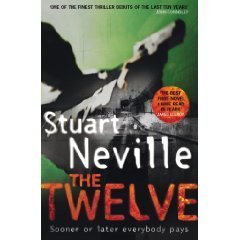
The Twelve by Stuart Neville
Harvill Secker (July 2, 2009 isbn: 1846552796)
(to be published in US in October as “The Ghosts of Belfast”, Soho Crime isbn: 1569476004)
Things that seemed clear enough to kill for during a conflict become impossible to look at once the murdering is at an end. Anyone who’s lived through a war or a time of terrorism could tell you that. Most of us bury those images. Gerry Fegan, the main character of Stuart Neville’s disturbing, compelling debut novel “The Twelve,” can’t look away. The ghosts of the people he killed as an IRA operative hang around with him, watching, taunting. The result is as thought-provoking a book on the aftermath of conflict as you'll ever read.
At first it seems Fegan is merely mad with trauma, remorse and drink. A hopeless casualty who’s failed to move on, as the rest of Northern Ireland steps into a new world of peace and reconciliation. Then the ghosts urge him to avenge them, killing the IRA street bosses and police turncoats who set up their deaths. The book takes an eery leap into the supernatural reminiscent of the books of Neville’s fellow Irishman John Connelly. The ghosts become characters in the book until – without giving away one of the most chilling moments in Neville’s climax – we see the proof that Fegan isn’t crazy, or if he is then he isn’t the only one who’s crazy. Instead, he shares a bond with the other bloodied footsoldier, a British agent named Campbell who can no longer imagine life without the danger of discovery and death.

Neville’s masterstroke is to take a post-conflict situation where of necessity a lot of former bad guys are converted to good guys -- gunmen made into legislators still running corrupt business sidelines -- and to show the price paid by those who can’t shrug off their past. Just as with the Palestinian militias of my Omar Yussef Mysteries, there was always a streak in the IRA that was more interested in racketeering and extortion than it was in fighting for "freedom" – all the killing was just a pretext for being the hardest gangsters in town. Neville’s book is a thrilling record of the traces of crime and blood left behind when the politicians command us to move on.
Review: New Liss mystery for lovers of Dumas and Perez Reverte

The Devil’s Company
By David Liss
Published: July 7, 2009 Random House isbn: 1400064198
Fans of swashbuckling classics by Alexandre Dumas and more recently Spaniard Arturo Perez-Reverte will love David Liss’s new novel The Devil’s Company. But they’ll also get something those authors don’t provide: a gritty dash of lowlife rough stuff worthy of the best contemporary crime fiction.
Set in 1722, The Devil’s Company begins with former boxer and ruffian Benjamin Weaver blackmailed into working on a case which involves another man’s death. Liss sets this up superbly: a British businessman maneuvers Weaver into a corner by exploiting the fact that Weaver, his family and associates are Jews and, therefore, marginalized in the London of the time. From the off, the protagonist is in the dark about the motivations of almost everyone around him. It’s a great jumping off point for a book that’s mystery and thriller all at once.
The adventure and panache of Liss’s plot and the daring of his main character are reminiscent of the great Dumas. The Devil’s Company stands up to comparison with Liss’s Edgar-winning “A Conspiracy of Paper” and his terrific book of Amsterdam, Jews and mercantile skullduggery, “The Coffee Trader,” which is one of my favorite historical novels.
Read my interview with David Liss.



